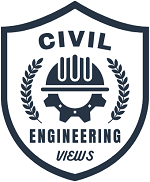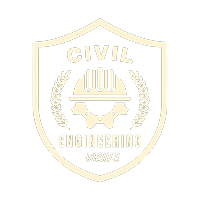Surface Finishing Of Concrete Blocks | Compound Wall | Stone Masonry And Technical Terms
Surface finishing of concrete blocks is done as per requirement. Generally, the following types of finishing are done. Stone masonry is long-lasting if done according to specifications. Moisture absorption is very low. Surface Finishing Of Concrete Blocks |Compound Wall |Stone Masonry And Technical Terms
1. Ordinary Finish
The proportions and size of aggregates are considered to make the surface of concrete blocks fine or coarse. Coarse aggregates are used more to make the surface coarse while more fine aggregates are used to make the surface fine.
2. Coloured Finish
In order to beautify the surface of the blocks, the required pigment is added during the preparation of the concrete.
3. Glazed Finish
Glazing is done to make the surface of concrete blocks transparent and glazed. For silica, polyester, and other chemicals are used to heat to the appropriate temperature.
4. Special Finish
If the surface of concrete blocks is to be made more beautiful, then marble tiles or ceramic tiles are applied on this surface. In addition, painting can be done on the surface of concrete blocks. Or other types of finishing can be done.
What Is The Compound Wall
When building a wall of bricks, stones, or concrete blocks, sometimes beautiful material blocks are used on the outside of the wall, and bricks, rough stones, or concrete blocks are used on the back. Such a wall is called a compound wall. Marble or granite can be used as beautiful material. In masonry work, both types of materials are bonded together in each layer Such a wall is beautiful and strong while it also costs less.
Surface Finishing Of Concrete Blocks |Compound Wall |Stone Masonry And Technical Terms
-
Difference Between Bricks And Stone Masonry |Principles Of Stone Masonry
-
How To Repair The Plaster And Floor Damaged surface
-
Best Suitable Concrete Design For Slab Beam Column And Roof
What Is The Stone Masonry
Stone has been used in building masonry since ancient times. Stone is still used in the construction of modern buildings. If masonry is made by combining mortar of stone with or without mortar, then such masonry is called stone masonry. There are many types of stone masonry. Ashler masonry includes Rubble Masonry and Ashlar Masonry. Other types of rubble masonry include Random Rubble and Coursed Rubble. Square Rubble and Dry Rubble masonry. Ashlar masonry includes Fine Ashlar, Rough-Faced Ashlar, Chamfered Ashlar, and Ashler Facing. Stone masonry is long-lasting if done according to specifications. Moisture absorption is very low.
Signification Of Stone Masonry
Stone masonry is the process of building structures by combining stones with any suitable mortar. Stone masonry is used to make walls, pillars, foundations, arches, etc. for the construction of a building. The stone is cut to the desired size and used for masonry. Stone masonry is common in mountainous areas. And in these areas, the stone is also used in plain areas. Rocks have to be brought from the mountains, which increases the cost of transportation to supply them in plain areas. However, even in the plains, expensive stones are being used to beautify the building. Most buildings in the plains are made of bricks. If the building is to be multi-story, the stone is not suitable due to its heavy weight. In addition, the use of stone requires more skilled craftsmen. And it is also difficult to prepare the stone in the desired shape before use. For all these reasons, stone buildings are confined to mountainous areas. But the stone is used in plain areas for floor and wall finishing. Strong and flawless stones should be used in stone masonry. And in masonry, special attention should be paid to stone joints.
-
What Is The Renovation And Renovation Of The Buildings
-
Why Provide The Bent Up Bar In The Column Beam And Slab
-
Calculate The Estimate of Wall Plaster
-
Seismic Proof Construction And Technical Terms
Types of stones are commonly used in masonry
The following types of stones are commonly used in masonry
1. Granite
2. Slate
3. Marble
4. Sandstone
5. Limestone
6. Laterite
-
How To Calculate The Bar Bending Schedule For Slab One-Way And Two Way
-
How To Find BBS For The Circular Column
-
Bar bending Schedule of Plinth Beam
-
Bar Bending Schedule For Column

Technical Terms
Here are some important technical terms related to stone masonry:
1. Bed Surface
The surface of the rock on which the weight acts is called the bed surface. It is perpendicular to the pressure line.
2. Bedding planes
The layers of natural layers of rock are called bedding planes. These layers are formed in the process of stone formation.
3. Grouting
Laying a layer of mortar on a rock to fill in the gaps between the rocks is called grouting.
4. Through Stone
The stone provided in the full thickness of the wall is called Through Stone. This strengthens the wall.
5. Template
The pieces of stone placed under the edges of the beam are called templates. Their use spreads the weight of the beam to a larger area.
6. Molding
Different parts of the building are beautified by extending it from the surface of the building, rounding it, or in some other way which is called moulding.
7. Drip Stone
A layer of stone masonry is extended beyond the surface of the wall. And a groove is made on the bottom of this layer of stone. So that water does not stick to the wall. These stones are called Drip stones.
8. Throating
A groove on the lower surface of a layer of stones protruding from the wall is called throwing.
9. Corbel
The stone that is pulled beam is called a corbel.
10. Cornice
out of the inner wall of the room to support the A layer of stone that extends out of the wall, which also creates beauty and protects the wall from rainwater, is called Cornice.
other post
-
Uses of the Leveling and Principles of Differential Leveling
-
Definition and Different Types of Surveying
-
Calculate Load And Design Calculation For Column Beam Wall And Slab
-
Sand Aggregates In Dipper Truck
-
How To Calculate The Volume of Concrete For Trapezoidal Footing
Land Surveying
-
How to start the RTK with Trimble Access All Steps
-
Base Station Installation on SPS855 and TSC3 Controller Configuration
-
RTK Survey Configuration With TS3 Controller Thimble TSC 3



[…] Surface Finishing Of Concrete Blocks |Compound Wall |Stone Masonry And Technical Terms […]